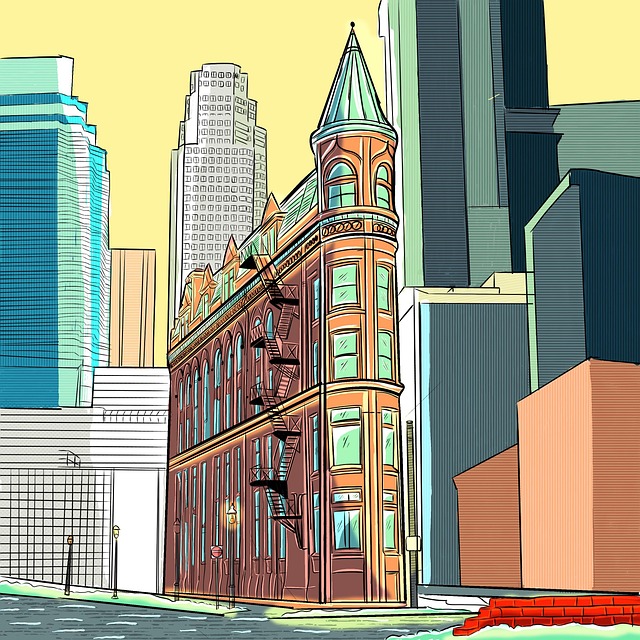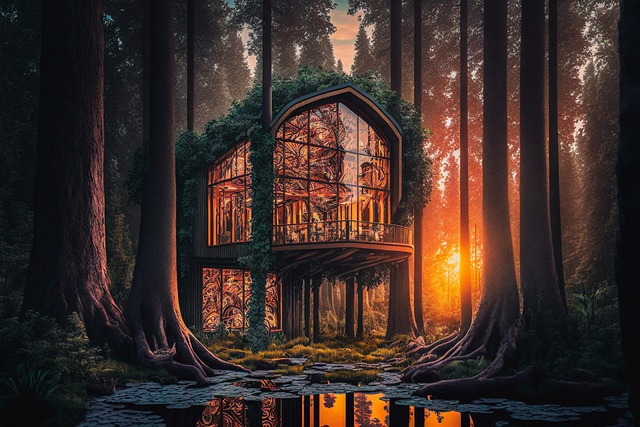Creative design in real estate transforms ordinary properties into high-end homes, maximizing space and aesthetics in competitive markets. By employing unconventional floor plans, strategic window placements, and innovative features, designers meet modern buyers' demands for unique, tailored spaces. In dense urban areas, clever partitioning and blending historical charm with modern amenities showcase successful creative design solutions, setting benchmarks for compact real estate development.
In today’s urban landscape, maximizing space is paramount, especially in thriving cities where real estate values are sky-high. Creative design offers a powerful solution to unlock hidden potential. This article explores innovative strategies to transform tight spaces into desirable residencies, attracting modern buyers. From unconventional layouts and natural light optimization to clever storage solutions, discover how intelligent design boosts comfort, health, and property value. Uncover the art of maximizing every square meter in your next real estate venture.
Unleashing Creative Design to Boost Real Estate Value

Unleashing creative design can significantly boost real estate value, transforming ordinary spaces into desirable, high-end properties. By thinking outside the box and implementing unique design elements, developers and homeowners can maximize every square meter, creating environments that appeal to potential buyers or tenants. Creative design doesn’t just enhance aesthetics; it adds functionality, optimizing layouts for modern living or specific purposes.
From clever use of natural light through strategic window placements to innovative storage solutions hidden within walls, these touches elevate a space’s overall appeal. In the competitive real estate market, properties that offer something distinctive often command higher prices or rental rates. Therefore, investing in creative design can be a smart strategy for increasing the return on investment, ensuring your property stands out and meets the expectations of discerning clients.
– Exploring unconventional layouts and aesthetics that attract modern buyers

In today’s dynamic real estate market, creative design strategies are essential to maximize space and attract modern buyers. Beyond conventional layouts, designers and architects are exploring unconventional aesthetics that challenge traditional norms. This shift is driven by a growing preference among potential homeowners for unique, tailored spaces that reflect their personal styles. By embracing unconventional floor plans, such as open-concept designs or multi-functional rooms, real estate properties stand out in a crowded market.
These innovative layouts not only offer more flexibility but also create a sense of sophistication and modernity. Materials, colors, and lighting are being rethought to enhance visual appeal and create atmospheric spaces. This blend of form and function ensures that each corner of the property is optimized, appealing to buyers who seek both aesthetic value and practical utility. As a result, unconventional design choices in real estate are becoming increasingly popular, reshaping the landscape of modern living.
– Case studies of successful renovations/redevelopments in tight urban spaces

In dense urban areas, where space is a premium, successful real estate projects often rely on creative design solutions to maximize every inch. Case studies like the transformation of New York’s Chelsea Market exemplify this. Once an industrial warehouse, it was reimagined as a vibrant, mixed-use hub featuring retail spaces, restaurants, and residential lofts. The project utilized vertical expansion and clever partitioning to create a dynamic, compact environment that flourishes with activity.
Similarly, the redevelopment of Singapore’s Tiong Bahru district showcases innovative design in tight spaces. By combining historical charm with modern amenities, the area has become a sought-after residential and commercial center. These examples highlight how strategic planning, attention to detail, and an understanding of local context can turn even the smallest urban plots into thriving, functional spaces that enrich community life.






